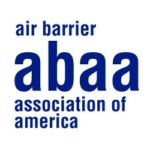
- This event has passed.
Using Background Oriented Schlieren (BOS) photography to visualize and measure building air leakage
April 13, 2023 @ 1:00 PM - 2:00 PM EDT
Building leakage accounts for about 4 quads of energy consumption in the U.S and can contribute to poor indoor air quality, occupant comfort and building material durability. Locating and sealing leakage sites is critical to save energy and to improve indoor building conditions and durability. In this webinar, we will discuss the application of refractive fluid flow imaging to find and measure leakage sites that is being developed at the Oak Ridge National Laboratory. This approach requires a cladding or interior surface with contrast, a pressure differential to drive flow, and a temperature difference between the indoor and outdoor air. A machine vision camera is used to acquire a short video of an area of the building envelope when a differential pressure is applied to the building. From this video, leakage can be visualized and the flow rate can be estimated. If successful this approach would allow the ranking of leakage sites, so that the largest leaks can be sealed first. We will present experimental results of this approach completed in the lab and outline next steps.
Learning Objectives:
- Describe state-of-the-art for building leakage measurement and leakage site location.
- Review optical method used to visualize transparent fluid.
- Discuss capabilities of leakage detection approach tested in the lab.
- Outline potential capabilities of optical detection of transparent fluid technique to building leakage visualization and measurement.
 Philip Boudreaux
Philip Boudreaux
Philip Boudreaux is an R & D associate staff member in the Building Envelope Materials Research Group at Oak Ridge National Laboratory. His training and early career experience is in physics and optics and since 2008 has been working in the building research area. Over the past few years he has been able to apply his past optics expertise to buildings. He is working on non-intrusive testing techniques so that building performance assessment can be done easier, quicker, and cheaper. This will better enable building retrofits that save energy and decrease emissions.
